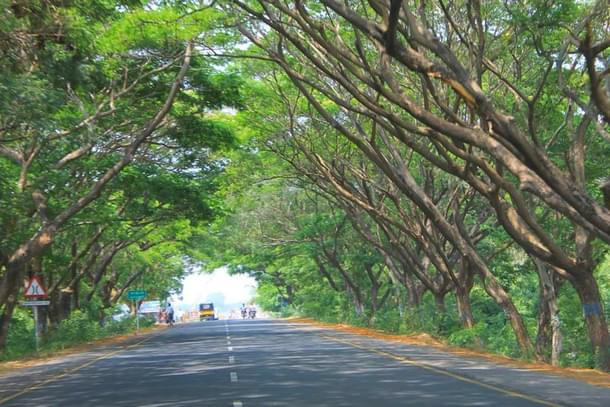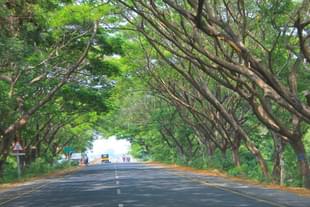Infrastructure
How Centre's Infrastructure Spending Aims To Eradicate Left-Wing Extremism By 2026
V Bhagya Subhashini
Sep 16, 2024, 06:03 PM | Updated Sep 20, 2024, 05:38 PM IST
Save & read from anywhere!
Bookmark stories for easy access on any device or the Swarajya app.


The recent doubling of the allocation for the Road Connectivity Project for Left Wing Extremism Affected Areas (RCPLWEA) from Rs 500 crore to Rs 1,000 crore for the financial year 2024-25 reflects the government's intensified focus on addressing Left Wing Extremism (LWE).
This decision follows Union Home Minister Amit Shah's declaration that LWE, or Naxalism, will be eradicated by March 2026, signalling a pivotal shift in the government’s strategy to counter Maoist insurgency.
The Role Of Infrastructure In Counter-Insurgency
The RCPLWEA, established under the Pradhan Mantri Gram Sadak Yojana (PMGSY), is designed to improve all-weather road connectivity in LWE-affected districts across nine states.
The RCPLWEA also plays a critical role in addressing the root causes of extremism by providing remote regions with access to basic services and economic opportunities, thus reducing the appeal of extremist ideologies. Improved road connectivity facilitates government outreach, enhances access to education and healthcare, and enables economic activities such as agriculture and trade to flourish, reports Indian Express.
At the same time, these roads serve as crucial lifelines for security forces operating in hostile environments, allowing for quicker mobilisation and better coordination of counter-insurgency operations.
As part of the revised fund allocation, major LWE-affected states like Chhattisgarh and Jharkhand will receive Rs 200 crore each, followed by Andhra Pradesh with Rs 150 crore, while Maharashtra and Madhya Pradesh will get Rs 140 crore each.
The Centre and states share the project expenditure in a 60:40 ratio, meaning that the states must allocate Rs 500 crore collectively to match the central share, bringing the total available funds for 2024-25 to around Rs 1,500 crore.
The scheme, which began in 2016, has already seen significant progress, with over 9,258 km of roads completed out of the targeted 12,227 km. These roads, strategically located in districts that have been hotbeds of Maoist activity, are expected to break the isolation of these regions, helping to integrate them more effectively into the national economy and polity.
A Broader Strategy Against LWE
The increase in funding aligns with Amit Shah's remarks that the fight against Maoist insurgency is nearing its end, with LWE-related incidents now concentrated in only 42 districts, down from 107 in 2010.
Shah’s description of the government’s "ruthless strategy" indicates a dual approach: while security forces continue aggressive operations against Maoist rebels, infrastructure projects like the RCPLWEA aim to win the hearts and minds of local populations by improving connectivity and economic opportunities.
Additionally, the Centre's allocation for other rural development programmes has been revised. The funds for the Pradhan Mantri Janjati Adivasi Nyaya Maha Abhiyan (PM-JANMAN), another rural connectivity initiative, were increased from Rs 1,260 crore to Rs 2,000 crore, reflecting the government’s commitment to uplifting marginalised tribal populations.
However, the allocation for the PMGSY, a more comprehensive rural road scheme, has been slightly reduced to Rs 15,908.86 crore from Rs 17,163.98 crore, suggesting a reallocation of resources toward targeted areas such as LWE-affected regions.
To sum up, by improving road connectivity in some of the country's most isolated and conflict-prone areas, the government aims to weaken the Maoists' grip on these regions and lay the groundwork for long-term peace and development.
V Bhagya Subhashini is a staff writer at Swarajya. She tracks infrastructure developments.





